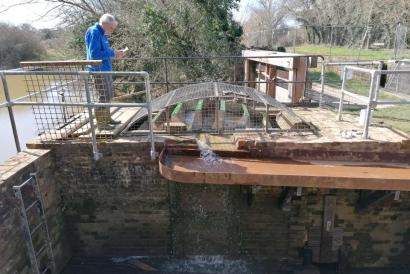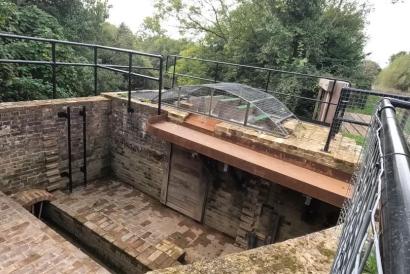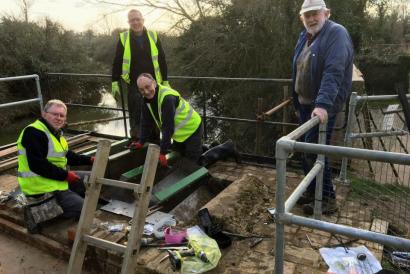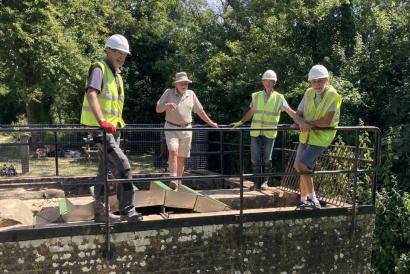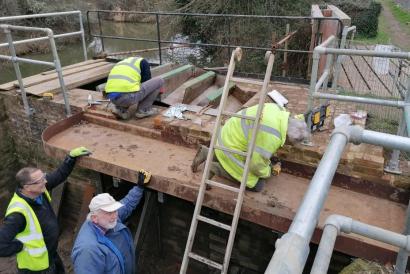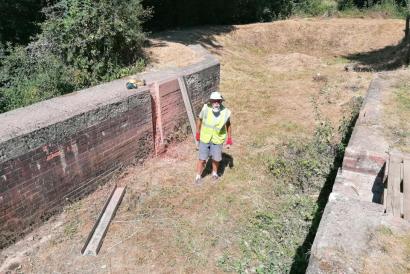The waterwheel at Lordings Lock and Orfold Aqueduct near Wisborough Green has been the focus of attention for Brian King and his team of volunteers over the past year and now their hard work has been brought to the attention of hundreds of thousands of people thanks to a YouTube video.
Wear and tear and vandalism had meant the waterwheel - an undershot wheel designed to take water from the River Arun and feed it into the canal – was out of action. However, when a grant from a charitable trust was received to fund the restoration Brian took on the challenge – and gave YouTubers Paul and Rebecca Whitewick a tour. Their film has had an incredible 323,000 views at the time of writing.
The wheel has proved something of an enigma over the decades. It was discovered by restoration pioneer Winston Harwood in complete disrepair in 1992 with no records to show its design. “No one knew exactly how it worked,” says Brian. That didn’t stop Winston, for whom Brian has nothing but admiration. “I was intrigued not only by its operation but the creativity and ingenuity of its design which Winston had established, starting in 1992, resulting in him getting it operational again in 2003. I am in awe of Winston for developing it into this unique working waterwheel,” he says.
How the wheel works
The canal on the Arun Navigation is carried over the river via a three-arched aqueduct, with the waterwheel - powered by the river – designed to lift the water into the lock. The wheel is some 13ft in diameter, located in a narrow brick chamber adjacent to a larger open pit. Two separate streams come into the waterwheel: one controlled by a manually raised slide gate which admits water to the bottom of the wheel. As the wheel rotates, its 32 buckets pick up water entering from a separate stream of water from a leat gate between the pit and chamber. The buckets raise the water to 9ft at the highest point, where water is discharged down a chute and into the lock.
The repairs
Investigations found that wheel’s central support bolts had sheared, so were no longer able to hold and contain the stub shafts. This meant the whole wheel had dropped onto the brick base. The solution was to commission a bespoke single stainless steel shaft with associated end flanges to support the wheel, manufactured to exact sizing and fixed in place by a specialist engineering contractor.
A specialist contractor was brought in to reweld the wheel’s damaged buckets and a new quadrant piece of stainless steel was added at the front of each to allow the water to be held long enough until it discharges at the top of the wheel’s rotation.
A Corten steel chute was introduced to convey the water from the wheel to the canal and new tubular handrails, access ladder and new brick arch for the leat were added.
When it was operated in early autumn Brian recorded the waterwheel’s throughput at 3,100 gallons per hour, running at 1.5 rpm.
River levels are too high to operate the wheel at this time of year and the area floods, but it is hoped to demonstrate the wheel in action in the spring - river levels permitting.
To watch the YouTube video, go to: https://www.youtube.com/watch?v=QEc925r6Kng


